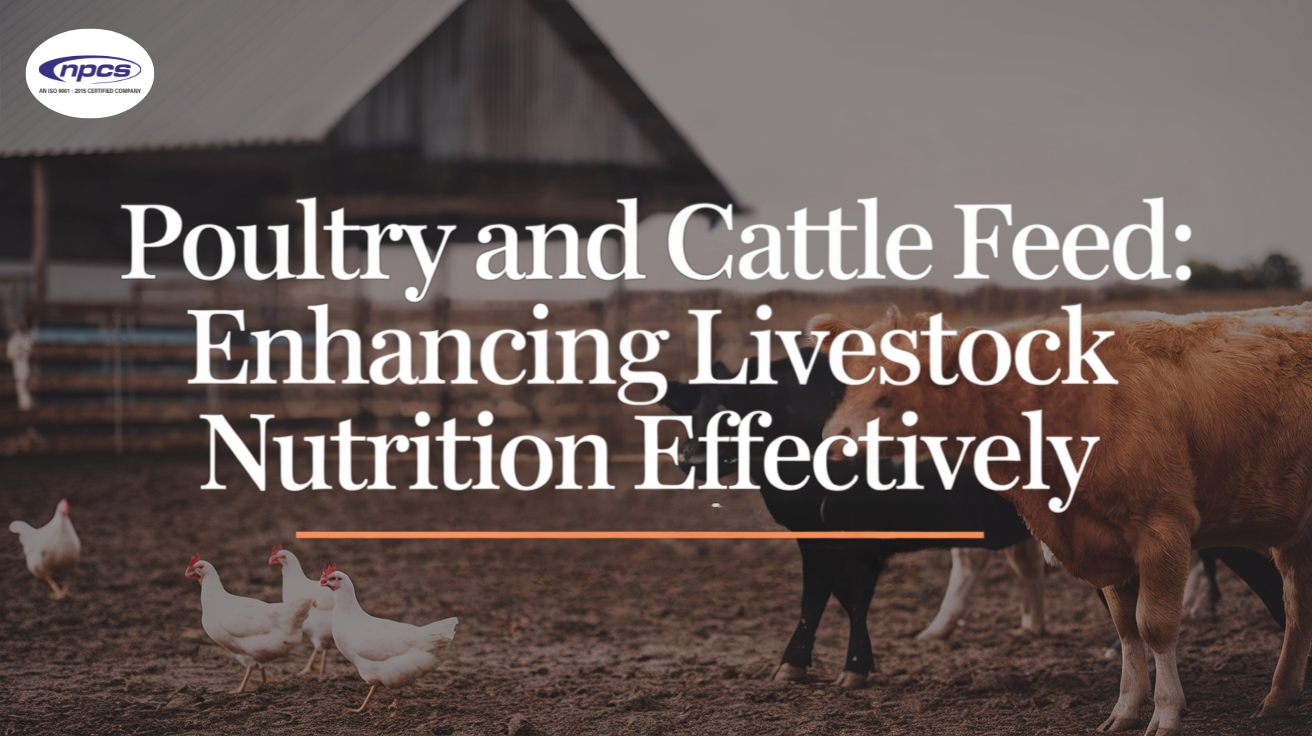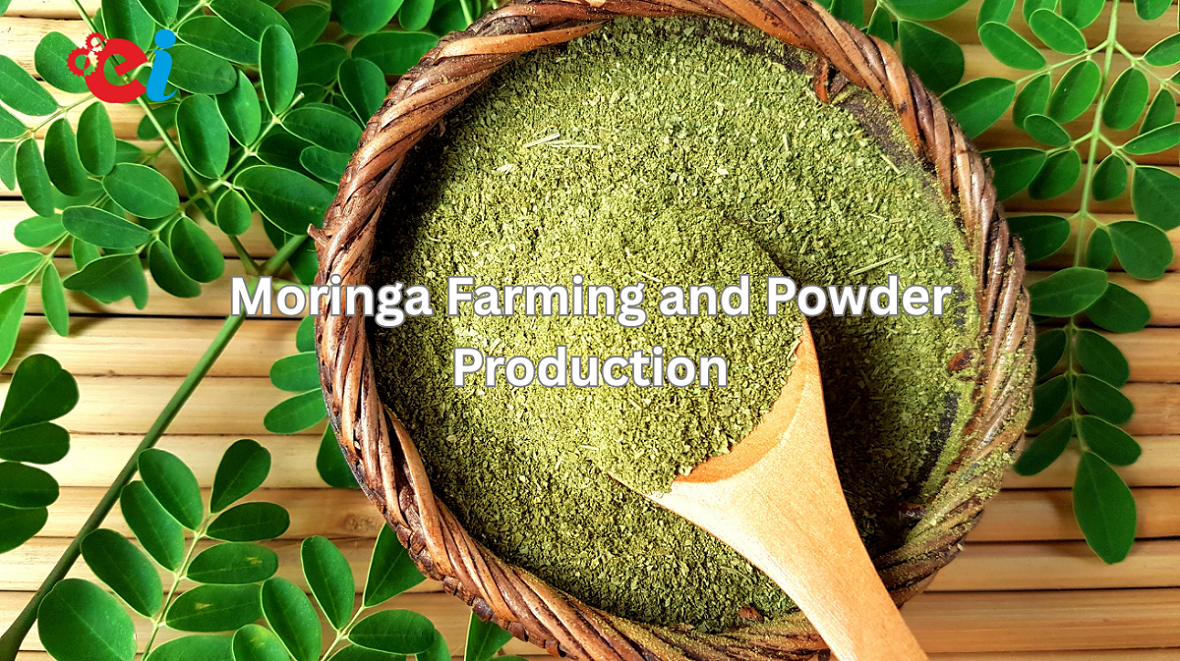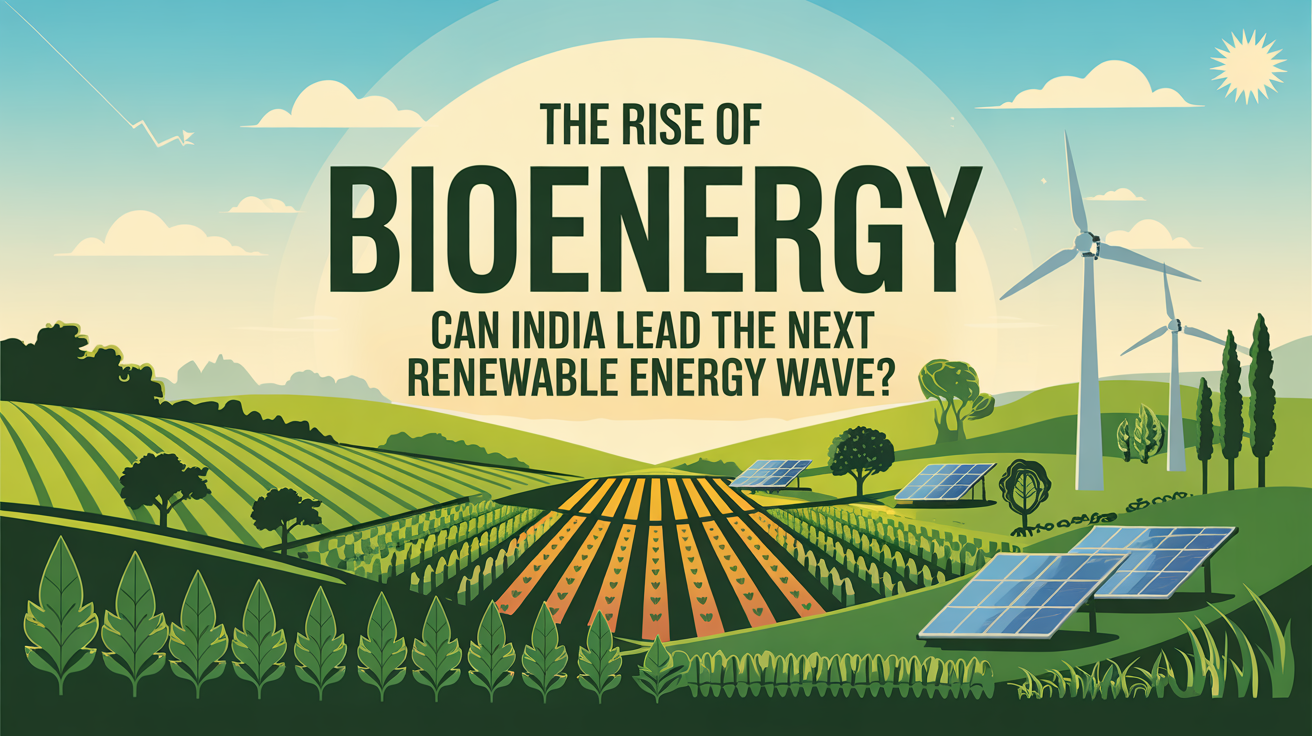There is no doubt that, over time and within the trends of the future in agriculture and livestock farming. The feed that is most suitable for poultry and cattle feed is highly valued. The agriculture industry, particularly in livestock farming, is progressing at a fast pace. And dietetics are an essential key to production and profits. Supplementation of feed that is fed to livestock is integral. Improving health status and increasing production and sustainability of animal production units.
Know More About : Cattle & Poultry Feed Manufacturing Business
Understanding Livestock Nutrition
Animal feeding is a branch of animal science that focuses on the diet and feed requirements. In an attempt to feed the animals to satisfy their nutrient requirements. They include macronutrients, which consist of proteins, fats, and carbohydrates, as well as the micronutrients, which include vitamins and minerals. It is quite pertinent that a right ration based on the physiological needs of the poultry. As well as of cattle greatly influences ,productive performance and health status of animals.
For poultry, the food intake mainly comprises grains, with corn and soybean meal as sources of energy, respectively. As for the day-old chickens, growers, layers, and broilers. They have different nutritional needs and therefore require the development of unique feeds. A vitamin, D, E, and K are important for bones and eggs; Calcium and phosphorus are proteins.
In cattle, feed may consist of forages such as alfalfa as well as gracalciumding corn and barley. Specialty animals such as cattle have a massive and highly specialized digestive system. That makes it possible to digest plant material that is bulky with the help of microbes from the rumen. Protein, energy, and micronutrients that are received. By the animal ensure improved muscle mass, milk yield, as well as reproduction systems.
Know More About : Livestock Farming Business Ideas
Data-Driven Insights on Feed Formulation
The practice in the formulation of poultry and cattle feed has gone a long way from management. Based on guesswork to the use of technologies and research results. Integrated with feed formulation is precision agriculture. As well as feed analytics that employs data such as soil analysis results, weather patterns, and growth indicators in animals.
Research shows that using data analytics in feed formulation can increase the digestibility of feed by 10-15%. And prove more economical, hence increasing productivity. For example, an article in the Journal of Animal Science shows how using a practical. Ratio depending on feed intake data increases the growth rate in broilers by 5% through increased feed efficiency.
Enhancing Nutritional Content through Innovative Ingredients
As people were focused on improving the nutritional value of the feed fed to the poultry and cattle feed. More flexible feed ingredients have been sought and incorporated into the feed formulation process. New feed inputs have been revealed to have the potential of positively enhancing the health and productivity of the livestock.
Alternative Protein Sources: The high cost of conventional protein sources such as soybean meal stimulated the consideration of other types. Insects, algae, and single-cell proteins are other things being considered as other more healthier and abundant sources of proteins. For instance, black soldier fly larvae have been determined to be containing up to 40% of protein. And therefore a good replacement for soybean meal in poultry feed.
Therapeutic Ingredients: These are other ingredients in feeds that include the provision of pro- and prebiotics and enzymes. That improve digestion and nutrient assimilation. A study in Poultry Science explained that feeding broilers with probiotics enhanced. The gut ecosystem, making the birds gain 3% more weight while their mortality rate was lowered by 7%.
Omega-3: Aychol rich in anti-inflammatory properties sourced from fish or flaxseed is also used in poultry and cattle feed diets. The said fatty acids also have the capability to bring improvements. On the shelf life and quality of meat and milk production. Scientists say that increased levels of fed cattle with omega-3 boost the milk fat by 5-10%. As described in journals like Journal of Dairy Science.
Project Report on : Poultry and Cattle Feed, Animal Feed and Food Industry
Precision Feeding: A Technological Leap
Precision feeding is a technical and efficient way of feeding. Whereby feed is given according to the needs of an individual animal. By prioritizing all the feed intakes, growth, and health incidences in real-time, farmers can determine the practical feed strategies.
Automated Feeding Systems: These will accurately allow the feed to be dispensed at the optimum time in the required quantity, thus eliminating the issue of overfeeding. According to research done by the International Journal of Precision Agriculture, it was discovered that the use of the automated feeding system helps in the reduction of feed cost by 15% while at the same time helping to improve the feed conversion rates.
Wearable Sensors: Since wearable sensors, which are mounted on an animal’s body to track body temperature, activities and rumination will offer an enormous opportunity to learn more about an animal’s status and its food habits. When this data is closely linked with feed management systems, it is possible to make the appropriate modifications to one’s diet activities in order to improve health.
Sustainable Practices in Livestock Feed Production
The fact is that more attention is being paid to the question of sustainability in the production of livestock feed. It sharply defines that sustainable practices not only help the firm in reducing the adverse effects on the environment but also in maintaining a healthy and reasonable sustainable feed industry in the future.
While sample methods of reducing feed wastage may mean feeding equipment should be properly stored and handled, this helps prevent feed waste. The Food and Agriculture Organization (FAO) notes that as much as 20 percent could be lost at the feed mill or on the farm during the feeding process in livestock production. The above-discussed improvement can minimize prevento a greater extent and save the resources that are otherwise wasted.
Use of Misproducts: Feed, which includes agricultural and industrial misproducts like distillers grains and citrus pulp, helps to lower crop dependency and avoid waste. These by-products are also nutritious, some of which can be utilized efficiently as feeds for animals. It is evident in this case that it is possible to use by-products to replace 20% of the conventional ingredients that are used in feeding cattle without compromising on productivity while at the same time cutting on the general feed cost by 10%.
Feeding and Husbandry: It is possible to feed the animals on other products from the farm while practicing agroforestry, which improves the productivity and richness of the soil. Leucaena and Acacia are good examples of trees used for the purpose of providing fodder because they are healthy and rich in protein level as well as in the aspect of the fertility of the soil.
Also Know About : Fish Meal Manufacturing Business
Challenges and Future Directions
Despite this, the challenges that still face the production of livestock feed have not been fully solved, thus the need to continue working on it. These are in relation to feed ingredients’ supply fluctuations, nutrient composition, and environmental concerns.
Fluctuating Prices: This is another major issue because prices of the basic feed ingredients are also changeable. Adopting multiple approaches in the procurement of proteins and the development of locally produced feed can help avoid this risk; hence, acquiring feed at moderate costs will be easy.
Nutritional imbalances: This is due to the fact that cattle feeds for one category of animal or at a particular stage in its lifecycle may be different from other category animals or at a different growth stage. Such issues require the integration of constant research and innovation in developing feeds formulations.
Environmental Sustainability: The livfeedk production scenario has an impact on the climate since it is acknowledged that the sector contributes to the emission of greenhouse gases. Issues like lesser usage of fertilizer input and utilization of carbon composite inputs are the best ways to have sustainable feed production.
Conclusion
Improving the feed efficiency of livestock is the complex process of selecting proper feed, using new technologies in the process of feeding, and having the proper feeding strategies in the life of animals. Exploring the analytical use of data and new ingredients as well as the precision in feeding technology, it could be noted that most farmers could feed their animals at an optimal level and make the business economically viable.
The future of poultry and cattle feed is in further research and improvement while ensuring that the new practice will follow the principles of sustainability. In order to overcome the problems and take advantage of the new opportunities, the livestock production system can be made more efficient and environmentally friendly, thus providing food for the growing population in the future.










